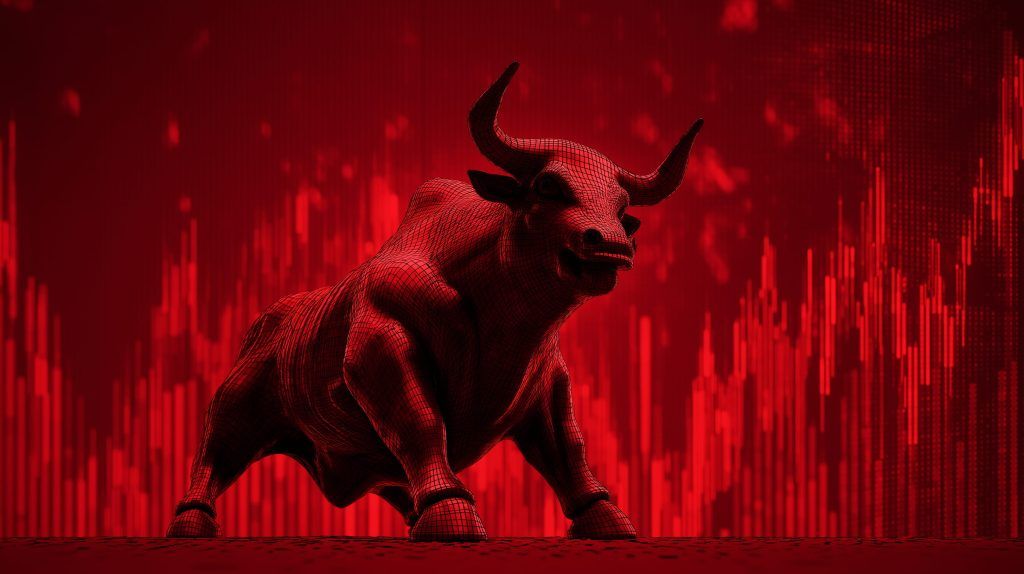U.S. stock futures are ticking higher on Wednesday, November 19, 2025, as Wall Street tries to stabilize after a sharp, tech‑led selloff and heads into what many traders are calling a “make‑or‑break” day for the artificial‑intelligence trade. The spotlight is firmly on Nvidia’s earnings, fresh Federal Reserve minutes, and a backlog of key economic reports finally coming out after the long government shutdown. [1]
Futures Point to a Cautious Rebound After a Rough Tuesday
As of early Wednesday morning in New York, U.S. stock index futures were modestly higher:
- S&P 500 E‑mini futures were up about 0.26%,
- Nasdaq 100 futures gained around 0.3%, and
- Dow futures added roughly 0.11%. [2]
The tentative bounce comes after a bruising session on Tuesday, when:
- The Dow Jones Industrial Average dropped 498 points (-1.1%) to 46,091.74,
- The S&P 500 fell 0.83% to 6,617.32, and
- The Nasdaq Composite slid 1.2% to 22,432.85. [3]
Those losses extended the S&P 500’s four‑day losing streak, its longest in about three months, and pulled the index roughly 4–4.5% below its late‑October peak, even though it remains about 12.5% higher year‑to‑date. [4]
Adding to the unease: both the S&P 500 and the Nasdaq have now slipped below their 50‑day moving averages for the first time since late April — a technical warning sign that the momentum of the rally has cooled, at least for now. [5]
Nvidia Earnings: The Day’s Big “AI Bubble or Not?” Moment
Today’s main event is Nvidia’s fiscal Q3 report, due after the closing bell. The chipmaker has been the single most important symbol of the AI boom, and its results are widely viewed as a stress test for the entire AI trade:
- Analysts expect revenue to jump about 56% year‑on‑year to roughly $54.9 billion for the August–October quarter. [6]
- Options pricing implies roughly a 7% swing in either direction after the report — a move big enough to produce one of the largest one‑day market‑value changes in Nvidia’s history. [7]
Nvidia’s stock has stumbled into earnings:
- It fell about 2.8% on Tuesday,
- Extending its month‑to‑date decline to more than 10%, which meets the usual definition of a “correction.” [8]
- Even so, the shares were up about 0.4% in premarket trading early Wednesday as some traders positioned for a possible relief rally. [9]
Because Nvidia is such a huge component of major indices, its post‑earnings move could heavily influence:
- The Nasdaq 100, where AI and semiconductor names dominate;
- The S&P 500, which has become increasingly concentrated in a handful of mega‑cap tech and AI‑linked stocks; and
- Investor perception of whether the “Magnificent 7” and broader AI complex are in bubble territory.
A recent global fund manager survey cited in U.S. press reports found that about 45% of large investors now see an “AI bubble” as the top tail risk, ahead of worries about bonds, inflation, or trade tensions. [10]
In other words: if Nvidia’s numbers or guidance disappoint, the selling we’ve seen in AI names could broaden and deepen. A strong beat, on the other hand, might convince traders that the pullback is more shake‑out than regime change.
Tech and AI Selloff Has Gone Global
Tuesday’s slide wasn’t just a U.S. phenomenon. Overnight and into Wednesday:
- The Nasdaq is now more than 6% below its late‑October record, driven by worries that AI‑exposed stocks have run too far, too fast. [11]
- Global equities (as tracked by MSCI’s All‑Country index) are down for a fifth straight session, the longest losing streak since August. [12]
- Major Asian and European benchmarks have been under pressure as well, with indices like Japan’s Nikkei and Europe’s STOXX 600 sliding from recent highs amid the same valuation concerns. [13]
The risk‑off mood has spilled into other speculative corners:
- Bitcoin briefly fell below $90,000 on Tuesday before rebounding to around $91,000–93,000, leaving it roughly 25–27% below its October record and wiping out its gains for the year. [14]
For now, that weakness in crypto and high‑flyer equities is being seen as part of the same story: investors questioning whether some of 2025’s biggest winners, especially in AI infrastructure, have simply gotten too expensive.
Fed Minutes, Rate‑Cut Odds, and a Week Packed With Data
Beyond Nvidia, Federal Reserve policy and long‑delayed economic data are the other main drivers for the U.S. stock market today.
Fed minutes later today
The Fed cut interest rates by 25 basis points at its October meeting — the second rate cut this year, aimed at supporting a cooling job market without reigniting inflation. [15]
- Minutes from that meeting will be released this afternoon.
- Traders hope to get more clarity on how many additional cuts, if any, Fed officials still see as appropriate.
Market pricing has shifted notably:
- A December rate cut that was once seen as almost guaranteed is now viewed as far from certain.
- Futures markets are currently assigning roughly a 40–42% probability of another 25‑bp cut in December, down sharply from a month ago. [16]
That uncertainty has left Treasury yields choppy: the 10‑year yield was recently hovering in the neighborhood of 4.11–4.13%, after easing on Tuesday from the prior session. [17]
The data “fog” after the shutdown is finally lifting
Adding to the complexity is the restart of U.S. economic releases now that the federal government has reopened after a record 43‑day shutdown. [18]
As the backlog clears, investors are bracing for a torrent of numbers, including:
- The September jobs report, delayed for weeks and now scheduled for Thursday, November 20,
- Key inflation gauges like CPI, PPI and PCE, and
- A raft of data on retail sales, GDP, and consumer spending, among others. [19]
Economists have compared the recent period without official data to “flying in fog without instruments.” [20] The rush of releases over the next few days could reshape expectations for both the Fed and 2026 growth — and by extension, valuations in rate‑sensitive parts of the market such as tech, small caps, and high‑multiple growth names.
Key Stocks and Sectors to Watch Today
Mega‑cap tech and AI
The mega‑cap growth complex remains the main swing factor for the U.S. stock market:
- Nvidia (NVDA): At the very center of today’s story, with options suggesting a huge potential move after earnings. [21]
- Alphabet (GOOGL): Trading about 1.5% higher in premarket after recent strength and positive sentiment around AI and cloud; one of the few large tech names showing early gains today. [22]
- Other mega‑caps: Stocks like Microsoft and Amazon have already seen sizable pullbacks in recent sessions as investors rotate out of AI‑themed trades and reassess lofty valuations. [23]
Retailers: Home Depot, Target, Walmart
Retail and consumer‑linked names are also central to today’s narrative:
- Home Depot (HD) tumbled about 6% on Tuesday after posting weaker‑than‑expected summer profits and cutting its full‑year outlook, citing softer housing activity, fewer major storms, and cautious consumers. [24]
- Target (TGT) reports earnings before the bell today, while Walmart (WMT) is due later this week. Wall Street will be looking for clues about:
- Holiday spending,
- The health of lower‑ and middle‑income consumers, and
- Whether retailers can maintain margins amid still‑elevated costs. [25]
Together, these companies will help investors gauge how resilient U.S. consumer demand is heading into the peak shopping season, at a time when real GDP is growing at about 3.8% annualized in Q2 after a mild contraction in Q1. [26]
DoorDash and other individual movers
- DoorDash (DASH) was up roughly 2.7% in early trading after Jefferies upgraded the stock from “hold” to “buy,” highlighting growth prospects in food delivery and logistics. [27]
- Elsewhere, some semiconductors and AI‑infrastructure names remain volatile amid shifting expectations for AI spending and data‑center capex. [28]
Under the surface: small caps and sector breadth
Interestingly, even as big tech has dragged the major indices lower, market breadth hasn’t been uniformly negative:
- On Tuesday, six of eleven S&P 500 sectors actually finished higher, and the Russell 2000 small‑cap index gained about 0.3%, according to Reuters data. [29]
That mixed picture suggests the recent selloff is concentrated in high‑valuation, AI‑linked megacaps rather than a broad‑based collapse in risk appetite.
Macro Backdrop: Dollar, Gold, Oil, and Crypto
Beyond equities, moves in other asset classes are giving additional signals about investor sentiment:
- The U.S. dollar index is still down about 8% for the year against major peers, on track for its worst annual showing since 2017, though it has recovered from double‑digit losses as the stock market rally stalled and rate‑cut expectations cooled. [30]
- Gold has pulled back from record highs but was recently up around 0.4% on the day, near $4,080 an ounce, as some investors hedge against both market volatility and policy uncertainty. [31]
- Brent crude oil is trading near $64 a barrel, a level that reflects both worries about global growth and ongoing supply dynamics. [32]
- Bitcoin, as noted, remains volatile and well below its peak, underscoring how quickly sentiment has turned against some of 2025’s biggest speculative winners. [33]
What Today’s Setup Means for Investors
For U.S. markets, November 19, 2025 is shaping up less as a “quiet midweek session” and more as an inflection point:
- Nvidia’s earnings could either validate years of AI‑driven optimism or reinforce fears of a bubble.
- Fed minutes and the coming data deluge will help determine whether investors can still count on lower rates to support stretched valuations.
- Market leadership is narrowing, with mega‑cap AI and tech names exerting outsized influence on major indices while other sectors and small caps behave more calmly.
For individual investors, episodes like this often highlight the importance of:
- Avoiding over‑concentration in any single theme (even one as dominant as AI),
- Paying attention to how rate expectations and economic data can quickly change market psychology, and
- Matching portfolio risk to time horizon and tolerance for volatility.
Nothing in this article is personal investment advice, but it’s clear that volatility is back, and what happens after the closing bell — when Nvidia opens its books — could set the tone for the rest of 2025.
References
1. www.reuters.com, 2. www.reuters.com, 3. www.reuters.com, 4. www.reuters.com, 5. www.reuters.com, 6. www.reuters.com, 7. www.reuters.com, 8. www.reuters.com, 9. www.reuters.com, 10. www.mariettatimes.com, 11. www.reuters.com, 12. www.reuters.com, 13. www.reuters.com, 14. www.reuters.com, 15. www.mariettatimes.com, 16. www.reuters.com, 17. www.mariettatimes.com, 18. m.economictimes.com, 19. m.economictimes.com, 20. m.economictimes.com, 21. www.reuters.com, 22. www.reuters.com, 23. www.nasdaq.com, 24. www.reuters.com, 25. www.reuters.com, 26. www.bea.gov, 27. www.reuters.com, 28. www.nasdaq.com, 29. www.reuters.com, 30. www.reuters.com, 31. www.reuters.com, 32. www.reuters.com, 33. www.reuters.com










